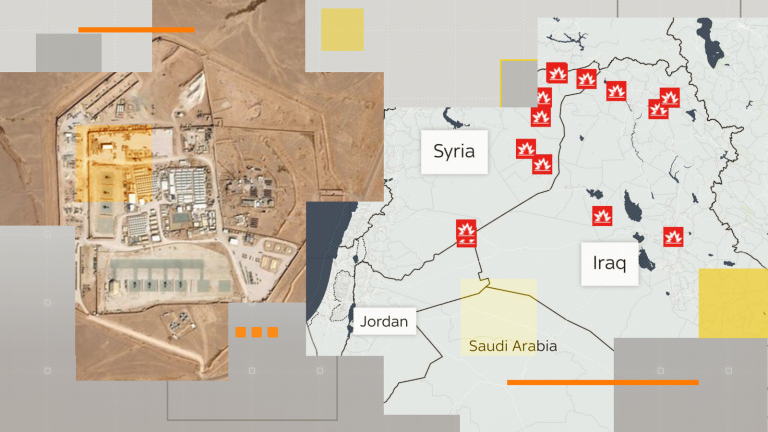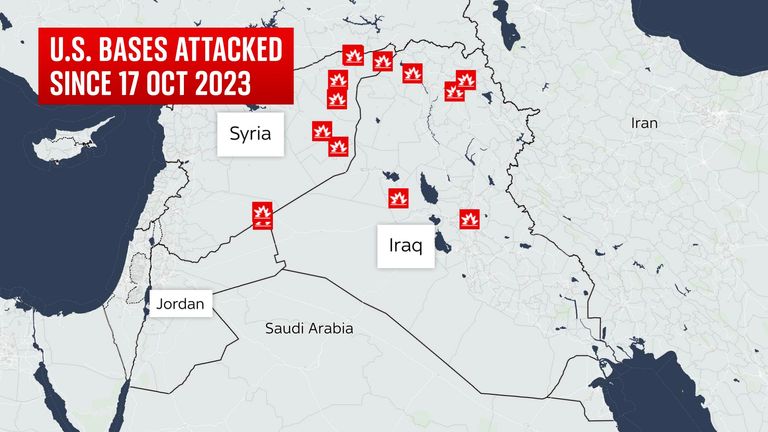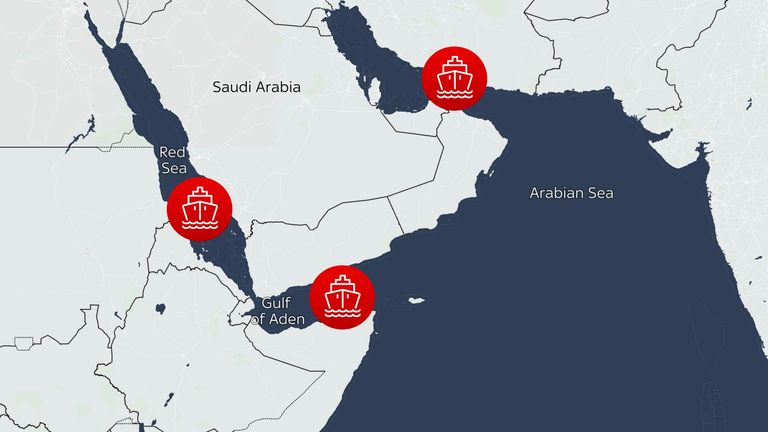Joe Biden promised that the United States would “respond” to the attack on Tower 22, which left three American military personnel dead and dozens injured.
The problem is that the United States was already responding to attacks after attacks on its bases in the Middle East – and yet failed to deter them.
There have been more than 160 so far.
The latest in the Middle East: Biden decides to respond to the drone attack
The United States responded to these – the graphic below shows their attacks since October 27.
It already includes strikes against the bases it operates Iranian The Iranian Revolutionary Guard – the regime's most powerful military force – not proxy militias.
Defense and security analyst Professor Michael Clarke said: “What the Americans were trying to do was to be very gradual in their response – always responding to individual attacks with another retaliatory response to where the attack came from.”
He added: “It is clear that this made the Iranians feel that they could continue to put pressure on America. So, I think that is the truth.” American service members have been killed You've crossed a line.
“The Americans must now decide whether they need to take action regarding their response.”
Would a response that included sanctions or perhaps a cyberattack be a step forward?
Several Iranian officials are already under sanctions, and there is internal pressure on Biden to move forward.
Professor Clarke points out that another option is to target Iranian ships in the Red Sea and related waters: “The Americans may consider this a reasonable target because they are all part of Iran’s attempts to create a crisis for America.”
IRGC speedboats regularly operate in the Strait of Hormuz and have seized oil tankers in the past.
Earlier this month, Iran also announced that its Alborz warship had entered the Red Sea.
There is also Behshad.
The ship officially carries cargo but military analysts say it conducts surveillance that has been vital to all attacks by the Houthis – another Iranian-backed militia that forms part of the same so-called “axis of resistance.”
These will be Iranian assets, but still outside Iran. At the top of the escalation scale, the attack will be on Iranian territory itself.
This may be limited to the coast. Or they could strike inland areas, perhaps even nuclear facilities.
This is the top of the ladder – and the United States will not start there, if only to give itself room to climb in the future.
Iranian Foreign Ministry spokesman Nasser Kanaani said on Monday that his country “does not welcome the expansion of conflicts in the region.”
Biden said on Tuesday, “We do not need a broader war in the Middle East,” but decided to respond without specifying it.
Others may claim that with the deaths of US military personnel, the broader war has already broken out.





